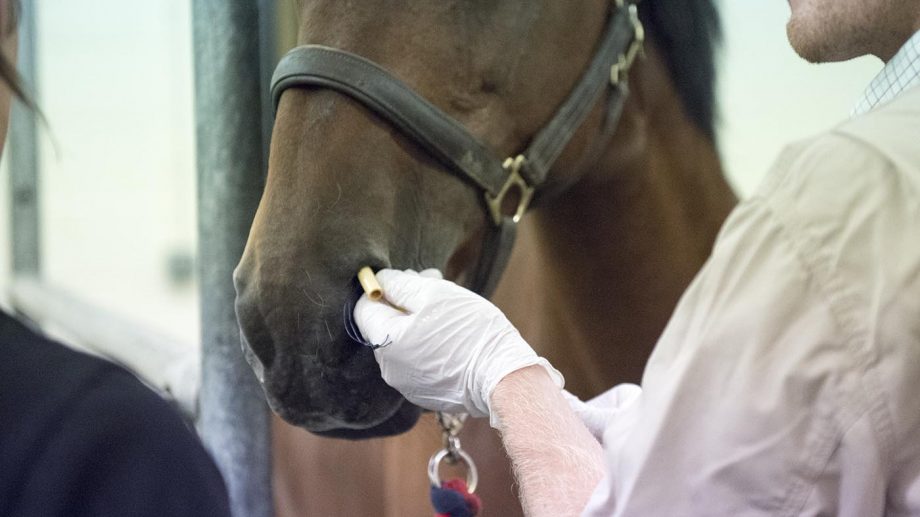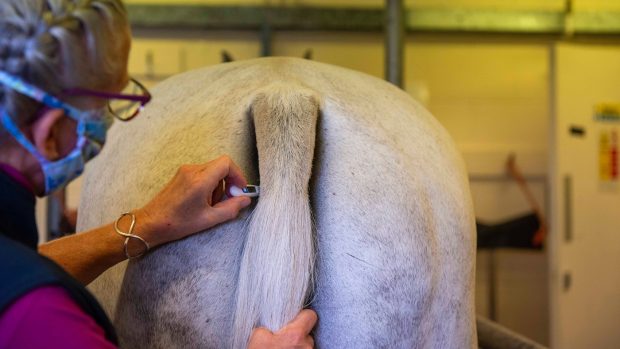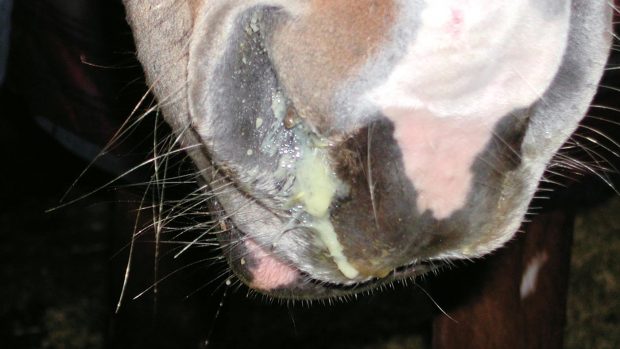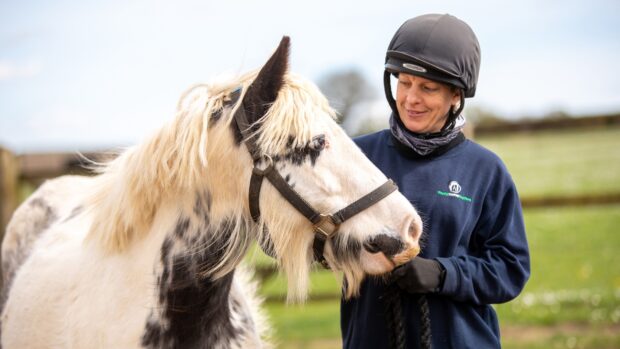A Dartmoor pony herd has been rounded up and tested for strangles in a bid to curb an aggressive outbreak of the disease that has been affecting the moor for the past year.
The semi-isolated herd had been grazing a 450-hectare site at Bellever as part of a conservation project, making them ideal candidates to track the infection’s progress and help contain its spread.
Since June, the outbreak has meant riders have been asked to stay away from the land near Postbridge, which is leased from Forestry England by the Dartmoor Pony Heritage Trust (DHPT), while walkers have also been asked to steer clear of the native ponies grazing there.
Although the herd has very limited contact with the others on Dartmoor, the highly infectious respiratory illness had still managed to reach the 27 ponies at the site.
“We were keeping our fingers crossed for them as it is a closed herd but at long odds, two ponies must have said hello to each other over the wall at the one corner where contact is possible and upsettingly it then rattled though this herd,” said DHPT patron and wildlife photographer Malcolm Snelgrove.
The DPHT chose to work alongside charities the Mare and Foal Sanctuary, Redwings and the Dartmoor Livestock Protection Society to drift the ponies in to a clean holding pen and test them.
At the same time, they also had their feet trimmed, while this year’s foals were allocated passports and microchipped.
“Ten per cent of infected ponies can become carriers and we wanted to create a firewall to stop this strain,” Malcolm said.

Picture by Malcolm Snelgrove
“The idea is to test them and see if we have carriers — if we do, the next step would be a guttural pouch wash to clear them of the disease.
“I don’t think anyone has tried a major testing operation like this before but as we have a closed herd with a lot of control, we are in a position to learn from this.”
The ponies were brought in on 30 September and 1 October and the results of the tests, which are being carried out at Redwings’ lab, are expected to take a week.
“The results will enable us to move some of the ponies on for sale,” Malcolm said. “Some of them had already been sold as riding ponies or as conservation ponies for different sites, but we couldn’t move them.
“Some vets will say that after two weeks of no clinical signs, they are deemed clear of infection, but I have been following the herds from a photographic perspective and I know strangles can kick around for two or three months, and then two months later there is another outbreak. As a charity we wanted to guarantee we didn’t move any ponies until we knew 100% that they weren’t carriers.”
The operation is being overseen by vet Hayden Webb and his team at Equus Equine Vets, and strangles expert Nic de Brauwere, head of welfare and behaviour at Redwings.
Malcolm added that the work would hopefully enable them to give breeders on Dartmoor an idea of the investment necessary to ensure spread is halted in the event of an outbreak.
“We need to know the most cost-effective way of stopping this,” he said.
The Bellever herd has already contributed to a University of Plymouth conservation study which demonstrated the positive impact the ponies had on the control of purple moor grass (molinia caerulea). The grass has become dominant and is having a negative impact on species diversity.
The work by Paul Hunt, Jakob Leigh, Samantha McNeill and Malcolm Gibb, published in the Conservation Evidence Journal has demonstrated that native ponies can be attracted to graze areas dominant in molinia caerulea through the use of salt licks.
Their grazing and trampling was shown to increase the establishment of heather seedlings.
You might also be interested in:

Stay away: desperate plea to walkers and riders as ponies on Dartmoor suffer ‘nasty’ strangles strain *warning: upsetting image*

Visitors warned: ‘look but don’t touch’ as ponies on Dartmoor develop strangles
The charities involved are expecting more visitors to the moor when lockdown restrictions ease

Strong evidence in support of new strangles vaccination

Subscribe to Horse & Hound magazine today – and enjoy unlimited website access all year round
Horse & Hound magazine, out every Thursday, is packed with all the latest news and reports, as well as interviews, specials, nostalgia, vet and training advice. Find how you can enjoy the magazine delivered to your door every week, plus options to upgrade your subscription to access our online service that brings you breaking news and reports as well as other benefits.




